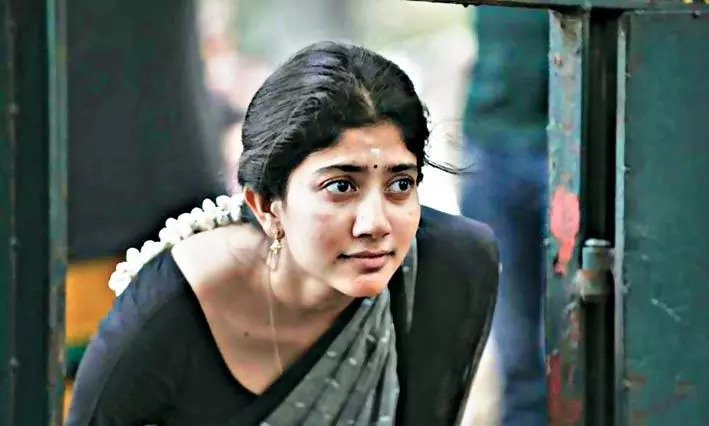No More Desi Damsel in Distress Sob Stories
Indian cinema’s new leading ladies are essaying roles of emotionally damaged heroine with panache, and the audience is loving it

Gone are the days when the Indian heroine danced in chiffon saris, held a dupatta coyly over her head, and fell in love with the hero at first glance. Today’s female lead is anxious, angry, wounded, and unapologetically human.
From Alia Bhatt’s emotionally raw performance in Jigra to Sai Pallavi’s layered portrayal in Gargi, the Indian film heroine is no longer just eye candy or moral compass. She’s spiralling, complex, and navigating life’s mess with more questions than answers. And audiences? They’re hooked. Welcome to the era of the emotionally damaged heroine — cinema’s new leading lady.
Not Your Dad’s Damsel
Traditionally, mainstream Indian films gave us two kinds of heroines: the sanskaari girl-next-door or the rebellious-but-redeemable firecracker. Both were still crafted with a male gaze in mind. Even when the heroine cried, it was aesthetically lit. But now, we’re seeing women who are not “heroine material” in the conventional sense. They break down in public, make morally grey choices, or simply don’t get a happy ending.
“It’s a refreshing shift,” says Reema Kamat, a Mumbai-based film critic. “We’re finally seeing women as full characters —flawed, fractured, and figuring things out. The heroine is no longer a placeholder for virtue or beauty. She’s the story.”
Raw & Real
Take Alia Bhatt in Jigra. Far from her usual peppy roles, she plays a sister gripped by fear, guilt, and the burden of protecting her sibling in a violent world. She’s not a superhero in heels — she’s stumbling, failing, and slowly growing.
“Alia has been quietly reinventing the female protagonist for a while — Highway, Raazi, Darlings — but Jigra strips away any gloss,” says screenwriter Tanvi Mehra, who has worked on several indie dramas. “Her character is emotionally threadbare, and that’s where the power lies.” Similarly, Sai Pallavi in Gargi portrays a schoolteacher grappling with the possibility that her beloved father is guilty of a horrific crime. There’s no melodrama. Just quiet devastation. “It’s the silences in Gargi that hit the hardest,” says Tanvi.
A Big Shift
It’s not a coincidence that this change is happening now. Post-pandemic cinema, global streaming, and a more emotionally aware audience have all contributed to this pivot. “The audience has matured,” says film analyst Kabir Deshmukh. “We’ve had our hearts broken, dealt with grief, isolation, therapy. We now crave characters who reflect that internal chaos.” And women, in particular, are done with the flawless girl trope. “We want to see women who are messy, depressed, impulsive,” adds Reema. “We want to see ourselves.”
OTT: The Game Changer
Streaming platforms have also played a huge role in this transformation. Without the pressure of box-office numbers, OTT content has given creators space to write meatier female characters. Shows like Delhi Crime, Mai, Saas, Bahu Aur Flamingo, Do Patti, Yashoda, Dahaad, Mrs Chatterjee vs Norway, Mrs, Phir Aayi Dill Ruba, Aranyak, and Qala feature heroines who are emotionally complex and mentally burdened — but never weak. “OTT removed the shackles,” says Tanvi. “You don’t need a song-and-dance sequence or a love angle to make a female character's work.’ You just need honesty.”
Beyond The Breakdown
The “damaged” doesn’t mean “damsel in distress.” These heroines are not waiting to be saved. They might be emotionally bruised, but they’re still agents of their story. Take Darlings, where Alia Bhatt plays a domestic abuse survivor who doesn’t just escape but flips the narrative. Or Thappad, where Taapsee Pannu’s character walks out of a marriage after one slap, not because she’s dramatic, but because she finally sees the patterns of control.
New Expectations
With this new wave, scriptwriting has changed too. Writers are no longer crafting heroines to be liked—they’re writing them to be understood. “You don’t need to make her lovable,” says Tanvi. “You need to make her real.” Audiences are connecting more deeply with women who show emotional range, who are vulnerable without being victims. And importantly, they’re not always redeemed. Sometimes, they stay broken. And that’s okay. This change is also inspiring a new generation of actors and creators. More female-led films are being greenlit, more indie stories are being funded, and more actresses are seeking out roles that are emotionally demanding.
“There’s a hunger now — for roles that scare you, for stories that hurt a little,” says Reema. “We’ve entered a space where a heroine can be clinically depressed, morally conflicted, or simply tired of pretending.”
Surprisingly, audiences are on board. Young viewers, especially, are tired of the airbrushed reality of old Bollywood.

